Sungsoo Ray Hong
3DPFIX: Improving Remote Novices' 3D Printing Troubleshooting through Human-AI Collaboration
Feb 02, 2024Abstract:The widespread consumer-grade 3D printers and learning resources online enable novices to self-train in remote settings. While troubleshooting plays an essential part of 3D printing, the process remains challenging for many remote novices even with the help of well-developed online sources, such as online troubleshooting archives and online community help. We conducted a formative study with 76 active 3D printing users to learn how remote novices leverage online resources in troubleshooting and their challenges. We found that remote novices cannot fully utilize online resources. For example, the online archives statically provide general information, making it hard to search and relate their unique cases with existing descriptions. Online communities can potentially ease their struggles by providing more targeted suggestions, but a helper who can provide custom help is rather scarce, making it hard to obtain timely assistance. We propose 3DPFIX, an interactive 3D troubleshooting system powered by the pipeline to facilitate Human-AI Collaboration, designed to improve novices' 3D printing experiences and thus help them easily accumulate their domain knowledge. We built 3DPFIX that supports automated diagnosis and solution-seeking. 3DPFIX was built upon shared dialogues about failure cases from Q&A discourses accumulated in online communities. We leverage social annotations (i.e., comments) to build an annotated failure image dataset for AI classifiers and extract a solution pool. Our summative study revealed that using 3DPFIX helped participants spend significantly less effort in diagnosing failures and finding a more accurate solution than relying on their common practice. We also found that 3DPFIX users learn about 3D printing domain-specific knowledge. We discuss the implications of leveraging community-driven data in developing future Human-AI Collaboration designs.
Designing a Direct Feedback Loop between Humans and Convolutional Neural Networks through Local Explanations
Jul 08, 2023Abstract:The local explanation provides heatmaps on images to explain how Convolutional Neural Networks (CNNs) derive their output. Due to its visual straightforwardness, the method has been one of the most popular explainable AI (XAI) methods for diagnosing CNNs. Through our formative study (S1), however, we captured ML engineers' ambivalent perspective about the local explanation as a valuable and indispensable envision in building CNNs versus the process that exhausts them due to the heuristic nature of detecting vulnerability. Moreover, steering the CNNs based on the vulnerability learned from the diagnosis seemed highly challenging. To mitigate the gap, we designed DeepFuse, the first interactive design that realizes the direct feedback loop between a user and CNNs in diagnosing and revising CNN's vulnerability using local explanations. DeepFuse helps CNN engineers to systemically search "unreasonable" local explanations and annotate the new boundaries for those identified as unreasonable in a labor-efficient manner. Next, it steers the model based on the given annotation such that the model doesn't introduce similar mistakes. We conducted a two-day study (S2) with 12 experienced CNN engineers. Using DeepFuse, participants made a more accurate and "reasonable" model than the current state-of-the-art. Also, participants found the way DeepFuse guides case-based reasoning can practically improve their current practice. We provide implications for design that explain how future HCI-driven design can move our practice forward to make XAI-driven insights more actionable.
Going Beyond XAI: A Systematic Survey for Explanation-Guided Learning
Dec 07, 2022



Abstract:As the societal impact of Deep Neural Networks (DNNs) grows, the goals for advancing DNNs become more complex and diverse, ranging from improving a conventional model accuracy metric to infusing advanced human virtues such as fairness, accountability, transparency (FaccT), and unbiasedness. Recently, techniques in Explainable Artificial Intelligence (XAI) are attracting considerable attention, and have tremendously helped Machine Learning (ML) engineers in understanding AI models. However, at the same time, we started to witness the emerging need beyond XAI among AI communities; based on the insights learned from XAI, how can we better empower ML engineers in steering their DNNs so that the model's reasonableness and performance can be improved as intended? This article provides a timely and extensive literature overview of the field Explanation-Guided Learning (EGL), a domain of techniques that steer the DNNs' reasoning process by adding regularization, supervision, or intervention on model explanations. In doing so, we first provide a formal definition of EGL and its general learning paradigm. Secondly, an overview of the key factors for EGL evaluation, as well as summarization and categorization of existing evaluation procedures and metrics for EGL are provided. Finally, the current and potential future application areas and directions of EGL are discussed, and an extensive experimental study is presented aiming at providing comprehensive comparative studies among existing EGL models in various popular application domains, such as Computer Vision (CV) and Natural Language Processing (NLP) domains.
RES: A Robust Framework for Guiding Visual Explanation
Jun 27, 2022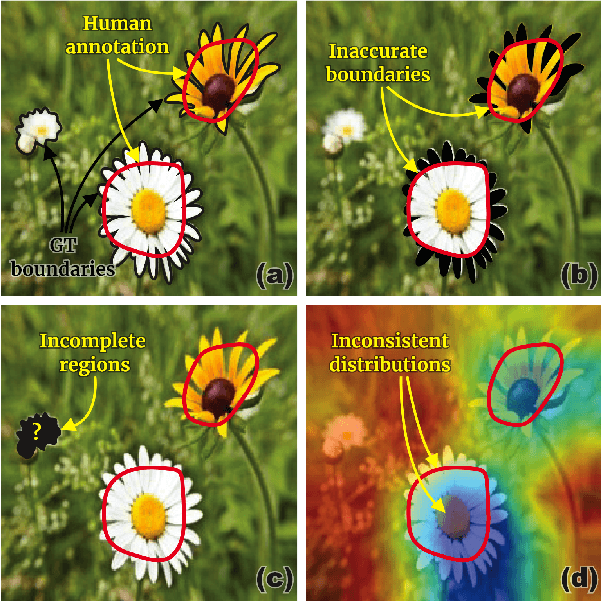
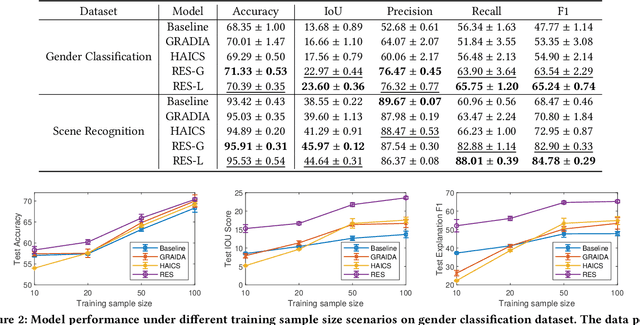
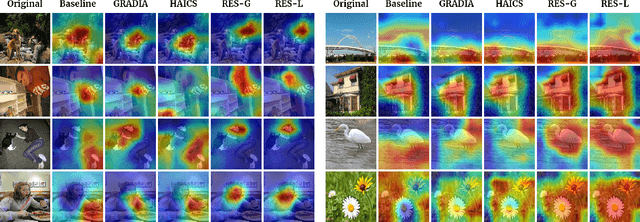
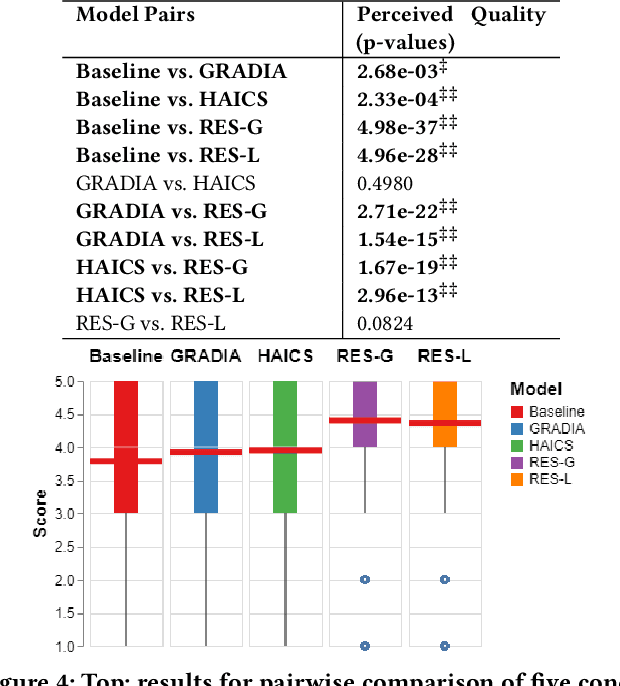
Abstract:Despite the fast progress of explanation techniques in modern Deep Neural Networks (DNNs) where the main focus is handling "how to generate the explanations", advanced research questions that examine the quality of the explanation itself (e.g., "whether the explanations are accurate") and improve the explanation quality (e.g., "how to adjust the model to generate more accurate explanations when explanations are inaccurate") are still relatively under-explored. To guide the model toward better explanations, techniques in explanation supervision - which add supervision signals on the model explanation - have started to show promising effects on improving both the generalizability as and intrinsic interpretability of Deep Neural Networks. However, the research on supervising explanations, especially in vision-based applications represented through saliency maps, is in its early stage due to several inherent challenges: 1) inaccuracy of the human explanation annotation boundary, 2) incompleteness of the human explanation annotation region, and 3) inconsistency of the data distribution between human annotation and model explanation maps. To address the challenges, we propose a generic RES framework for guiding visual explanation by developing a novel objective that handles inaccurate boundary, incomplete region, and inconsistent distribution of human annotations, with a theoretical justification on model generalizability. Extensive experiments on two real-world image datasets demonstrate the effectiveness of the proposed framework on enhancing both the reasonability of the explanation and the performance of the backbone DNNs model.
* Published in KDD 2022
Human Factors in Model Interpretability: Industry Practices, Challenges, and Needs
May 30, 2020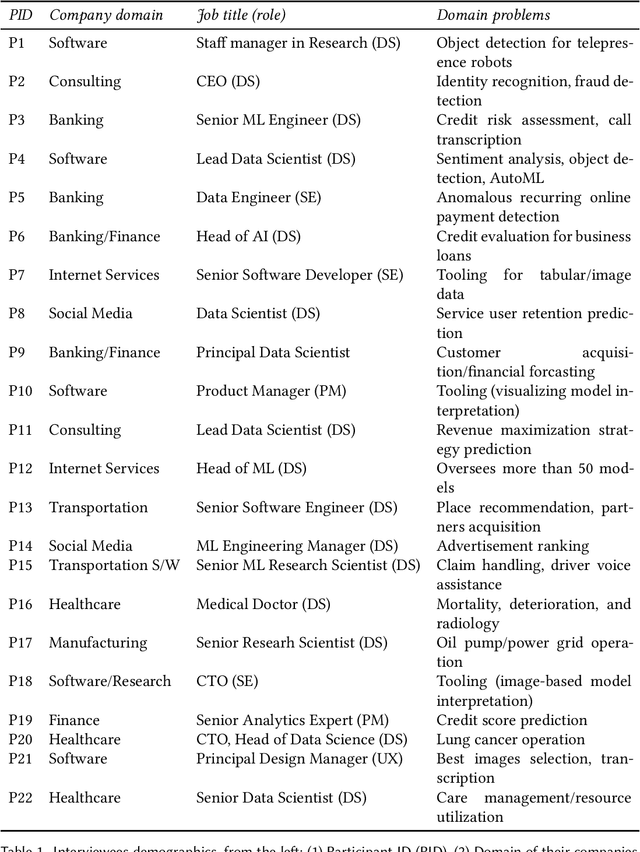
Abstract:As the use of machine learning (ML) models in product development and data-driven decision-making processes became pervasive in many domains, people's focus on building a well-performing model has increasingly shifted to understanding how their model works. While scholarly interest in model interpretability has grown rapidly in research communities like HCI, ML, and beyond, little is known about how practitioners perceive and aim to provide interpretability in the context of their existing workflows. This lack of understanding of interpretability as practiced may prevent interpretability research from addressing important needs, or lead to unrealistic solutions. To bridge this gap, we conducted 22 semi-structured interviews with industry practitioners to understand how they conceive of and design for interpretability while they plan, build, and use their models. Based on a qualitative analysis of our results, we differentiate interpretability roles, processes, goals and strategies as they exist within organizations making heavy use of ML models. The characterization of interpretability work that emerges from our analysis suggests that model interpretability frequently involves cooperation and mental model comparison between people in different roles, often aimed at building trust not only between people and models but also between people within the organization. We present implications for design that discuss gaps between the interpretability challenges that practitioners face in their practice and approaches proposed in the literature, highlighting possible research directions that can better address real-world needs.
 Add to Chrome
Add to Chrome Add to Firefox
Add to Firefox Add to Edge
Add to Edge